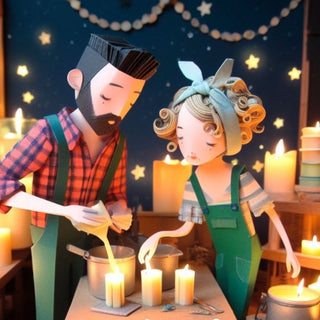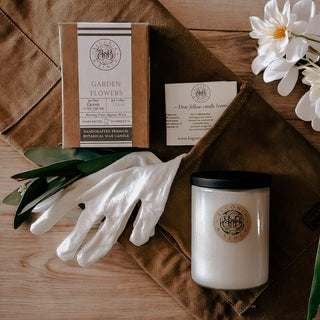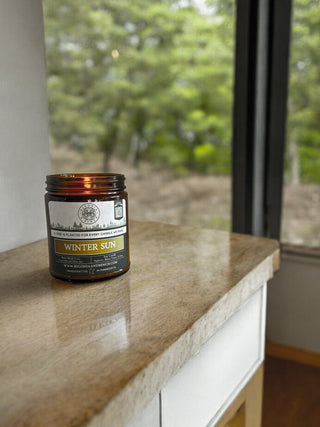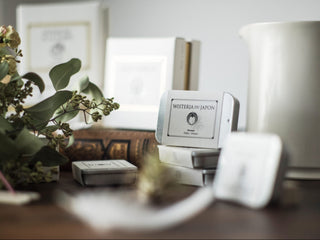Candle Safety & Use Instructions
WARNING!
A lit candle is an open flame
- Before burning any of our candles, always straighten then trim the wick to ¼ inch.
- You can use a wick trimmer, nail clippers, or scissors to cut the wick.
- Long or crooked wicks can cause uneven burning, dripping or flaring and can be a fire hazard.
- Keep the wax clear of wick trimmings, match pieces and debris at all times.
- Always burn a candle on a heat and fire safe surface that is fire resistant, sturdy, and large enough to contain any drips of melted wax.
Burn candles in a well-ventilated but not drafty room:
- Avoid burning a candle in an area effected by drafts, vents or air currents. This will help prevent rapid or uneven burning, sooting, and weak scent. If the candle scent is not as strong as you expect, you may have ventilation or air filtration systems diminishing scent throw.
- Our Companion candles will emit a noticeable aroma in an enclosed area of approximately 50 sq ft/4.64 sq m.
- Our Grand candles will emit a noticeable aroma in an enclosed area of approximately 200 sq ft/18.58 sq m.
- In general, it is recommended that you do not burn candles for longer than four hours and cool for at least two hours before relighting.
- Candles burned longer than four hours may overheat and create a fire hazard.
- When lighting a candle, use long matches or a long-reach lighter.
- Always keep your hair and loose clothing away from the flame.
While Burning:
- Never leave a lit candle unattended.
- Never burn a candle on or near anything that can catch fire.
- Keep burning candles away from furniture, drapes, bedding, carpets, books, paper, flammable decorations, or anything else that may easily burn.
- Keep candles out of the reach of children and pets.
- Do not place lighted candles where they can be knocked over by children, pets or anyone else.
- Never touch or move a candle while it is burning or while the wax is still molten.
- For a margin of safety, discontinue burning a candle when 1/2 inch of wax remains in the container.
- Place burning candles at least three inches apart from one another. This is to make sure they don’t melt one another, or create their own drafts that will cause the candles to burn improperly.
- Extinguish a candle if the flame becomes too high or flickers repeatedly.
- Let the candle cool, trim and straighten the wick, and check for unwanted drafts before re-lighting.
- Never use a candle as a night light.
- Never use a candle or where you may fall asleep.
- Be very careful if using candles during a power outage. Flashlights and other battery-powered lights are safer sources of light during a power failure.
- Never burn a candle in a tent or in a non-ventilated space.
- Candles emit carbon monoxide. Practice and use proper safety measures to limit unsafe exposure to carbon monoxide. Exposure to unsafe limits of carbon monoxide may be fatal.
- Never use a candle during a power outage to look for things in a closet, or when fueling equipment – such as a lantern or kerosene heater.
When Extinguishing a Candle:
- Always use caution when extinguishing a candle, whether by blowing out, using a snuffer, or with a wick dipper.
- Do not use the candle lid to extinguish the candle.
- Never use water to extinguish a candle. Water will cause the hot wax to splatter and might break a glass container.
- Make sure the candle is completely out and the wick ember is no longer glowing or smoking before walking away from the candle.
- Do not touch or move the candle until it has completely cooled.
- Never use a knife or sharp object to remove wax drippings from a glass holder. It might scratch, weaken, or cause the glass to break upon subsequent use.
- Our candles are best stored top side up with the lid securely attached, at temperatures between 72F-80F degrees.
- Cooler temperatures may cause the wax to shrink slightly resulting in a visible separation from the glass, and warmer temps may induce melting or oiling of the top layer of wax.


A Candle Like No Other
The art of fusing aroma & light
We are obsessed with olfactory art & candle perfection.
Our finely crafted Artisan candles are preferred by candle enthusiasts, or those seeking a perfect gift for their candle loving friends.
Every Artisan candle is a labor of love, perfumed with patiently macerated aroma oils, poured in multiple stages, cured & aged. Only our best candles from the batch are then prepared with careful polishing, leaving no blemish to tarnish the candle experience. Once perfected, it’s carefully hand-wrapped in kraft paper, then boxed with tasteful packaging - creating a thoughtful, one-of-a-kind presentation.
This extra care transforms our candles into more than just a source of light- they become a heartfelt gift, ready to delight the recipient from the moment they unwrap it.
Whether you’re treating yourself or someone special, our handcrafted candles offer a unique experience that combines timeless craftsmanship with the joy of giving.




